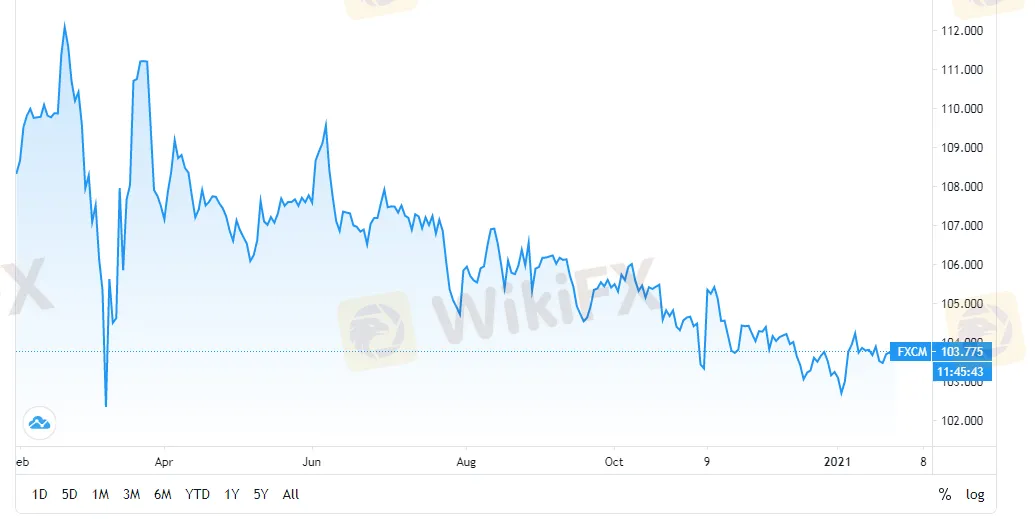简体中文
繁體中文
English
Pусский
日本語
ภาษาไทย
Tiếng Việt
Bahasa Indonesia
Español
हिन्दी
Filippiiniläinen
Français
Deutsch
Português
Türkçe
한국어
العربية
2021 USD/JPY Outlook: HSBC Holds Bullish Outlook
Abstract:USD/JPY will rise gradually in the year ahead.
The Japanese yen increased about 5% against the US dollar in 2020 because of the markets Risk On-Risk Off (RORO) fixation. In 2021, economists at HSBC believe forex will shift away from RORO behaviour to relative economic growth. With a benign domestic growth outlook and probable outflows, they expect a less resilient JPY in the year ahead.
“We believe RORO will be superseded in 2021 by a greater fixation on economic activity, in particular, the relative experience of different countries and their ability to secure a recovery amid the uncertainty of COVID-19,” said HSBC.
Considering the resurgent pandemic, the Bank of Japan will likely maintain its ultraloose policy stance, while new Prime Minister Yoshihide Suga has earlier ordered the Cabinet to come up with a supplementary budget that could exceed 3% of GDP.
HSBC added that with longer-dated US yields rising again, the discussions around Japanese investors hedging their buying of foreign assets, or even slowing them, look likely to fade. Such outflows are likely to persist and contribute to JPY weakness.
All this points to a less resilient performance from the JPY, which indicates USD/JPY will rise gradually in the year ahead.
Use WikiFX (bit.ly/wikifxIN) to discern market trends, capture trading opportunities and make more profits.

Chart: Trends of USD/JPY
Disclaimer:
The views in this article only represent the author's personal views, and do not constitute investment advice on this platform. This platform does not guarantee the accuracy, completeness and timeliness of the information in the article, and will not be liable for any loss caused by the use of or reliance on the information in the article.
Read more

Japanese Yen Outlook: USD/JPY, EUR/JPY & GBP/JPY
The yen weakens further as Fed Chair Powell's cautious remarks influence market sentiment. USD/JPY remains around 161, with resistance at 162, driven by Powell's comments and upcoming US CPI data. June's lower-than-expected PPI in Japan adds pressure on the yen. The sentiment is bullish for USD/JPY, supported by strong US economic indicators. Key influences include Federal Reserve signals, US economic data, and Japan's PPI. Potential movement for USD/JPY could see it testing 162 resistance.

Today's analysis: Gold Prices Maintain Strength Amid Mixed Economic Signals
The U.S. ISM Manufacturing PMI dropped to 48.5 in June, below expectations, but the dollar rebounded after a Supreme Court ruling in favor of Trump. Investors await U.S. job data for hints on potential Federal Reserve rate cuts. Despite rising U.S. bond yields, gold remains strong near $2300. If it breaks above the 50-day moving average of $2337, it could reach $2390-$2400, but faces resistance at $2339.21. A drop below $2323.29 would weaken the bullish signal; watch for a breakout in the $2291.

Japanese Yen Outlook: USD/JPY, EUR/JPY & GBP/JPY
The yen continues to weaken against major currencies, with USD/JPY potentially climbing above 165. Japan's officials express concerns, hinting at potential intervention. Stable domestic indicators fail to support the yen amid robust USD performance.

USDJPY Predicted to Rise on Yen Depreciation
The USD/JPY pair is predicted to increase based on both fundamental and technical analyses. Fundamental factors include a potential easing of aggressive bond buying by the Bank of Japan (BoJ), which could lead to yen depreciation. Technical indicators suggest a continuing uptrend, with the possibility of a correction once the price reaches the 157.7 to 160 range.
WikiFX Broker
Latest News
AIMS Broker Review
The Hidden Checklist: Five Unconventional Steps to Vet Your Broker
Russia to Fully Ban Crypto Mining in 10 Regions Starting January 1, 2025
YAMARKETS' Jingle Bells Christmas Offer!
Why is there so much exposure against PrimeX Capital?
MTrading’s 2025 "Welcome Bonus" is Here
Doo Financial Obtains Licenses in BVI and Cayman Islands
CFI’s New Initiative Aims to Promote Transparency in Trading
Currency Calculator


